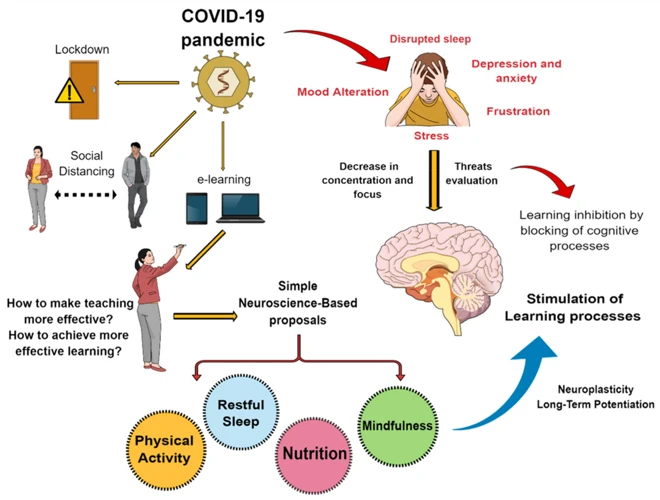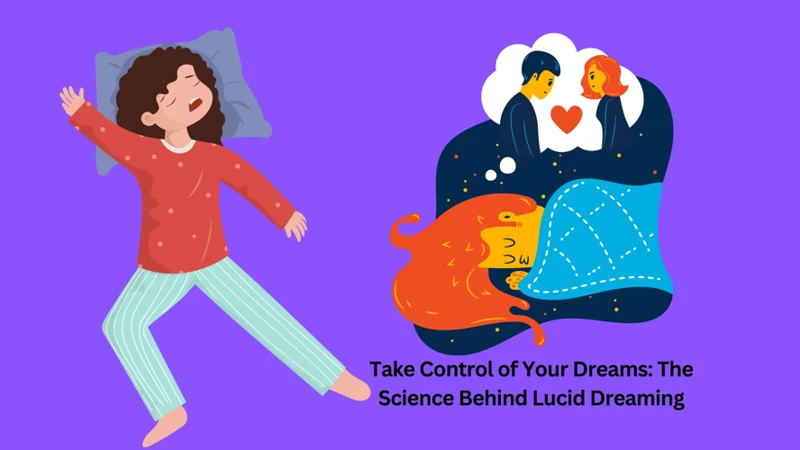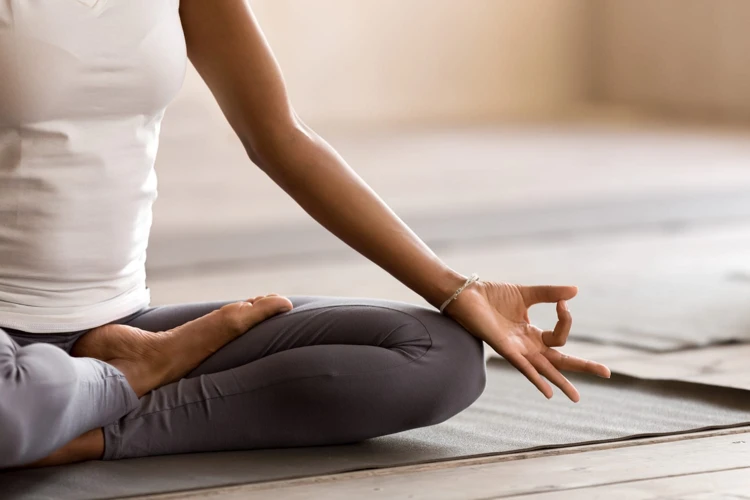Picture this scenario: you have a long day at work, followed by a stressful commute home, and then you spend hours tossing and turning in bed, unable to fall asleep. Sounds familiar? If yes, then you are not alone. Millions of people worldwide suffer from some form of sleep disorder or struggle to relax and unwind after a busy day. Fortunately, there are various relaxation techniques available that can help you combat these issues and enhance your overall sleep quality. In this article, we will explore the science behind relaxation techniques and their impact on dreaming. From the neuroscience of relaxation to the benefits of using relaxation techniques to improve your cognitive function, we’ve got you covered. So, grab your favorite blanket and pillow, sit back, and let’s dive into the world of relaxation and dreaming.
What are Relaxation Techniques?

When it comes to managing stress and improving sleep quality, there are a variety of techniques you can try. Relaxation techniques are one such option, which involve consciously focusing on calming activities and breathing exercises to reduce feelings of anxiety and tension in the body. These techniques have been used for centuries across different cultures and are clinically proven to offer a range of benefits beyond just relaxation. In this section, we will explore the different types of relaxation techniques and their potential impact on dreaming.
Types of Relaxation Techniques
Relaxation techniques can be categorized into different types, each with a distinct method and goal. Mindfulness-based techniques are designed to bring a person’s attention to the present moment, helping them to achieve a state of relaxation through conscious awareness. Meditation can include various practices such as focused attention, open monitoring, and mantra-based meditation, which involve concentrating on a specific object or thought to calm the mind.
Progressive Muscle Relaxation (PMR) involves tensing and relaxing specific muscle groups to induce relaxation. Another technique, Autogenic Relaxation, involves visualizing calming sensations such as warmth and heaviness in the body to create a relaxed state. Breathing techniques, such as deep breathing and resonant breathing, aim to slow down breathing and reduce anxiety, while Yoga combines physical postures with deep breathing and meditation to promote relaxation and reduce stress.
Guided Imagery involves creating mental images that evoke feelings of calm and relaxation, such as imagining oneself in a peaceful location. Aromatherapy uses scents from essential oils to promote relaxation and reduce stress. Massage therapy is also a relaxation technique that involves the manipulation of soft tissue to release tension and promote relaxation.
Choosing the right relaxation technique depends on personal preference and individual needs. Trying different techniques and finding what works best for you can maximize the benefits of relaxation and encourage a good night’s sleep.
The Neuroscience of Relaxation

Relaxation techniques have been used for centuries to improve mental and physical health. However, it is only in recent years that scientists have begun to understand the neuroscience behind these practices. Neuroscience studies tell us that relaxation techniques like meditation and deep breathing can significantly reduce activity in the sympathetic nervous system, the part of the nervous system responsible for our fight or flight response.
When we feel stress, anxiety or fear, our brain releases cortisol and adrenaline, which increases our heart rate, blood pressure, and breathing rate. This is our body’s natural response to perceived danger. However, prolonged activation of the sympathetic nervous system can lead to chronic stress, which can negatively impact our health over time.
Relaxation techniques help us shift from the sympathetic nervous system to the parasympathetic nervous system, which is responsible for rest and relaxation. They reduce the release of stress hormones and increase the production of neurotransmitters like serotonin and dopamine, which are associated with feelings of happiness, relaxation, and inner peace.
Research also suggests that relaxation techniques can increase the size of the hippocampus, a part of the brain responsible for memory, learning and emotion regulation. This can help we cope better with stress and anxiety and improve our ability to focus and concentrate.
Relaxation techniques have a significant impact on our brain and nervous system. They can help prevent chronic stress and its negative health effects. By practicing relaxation techniques, we can improve our overall mental and physical well-being.
Relaxation Techniques and Dreaming

As we all know, relaxation is an essential part of maintaining good mental and physical health. It can help us reduce stress and anxiety, improve our sleep quality, and even enhance our creativity and problem-solving abilities. However, what many of us may not realize is that relaxation techniques can also have a significant impact on our dreaming. By gaining a better understanding of the science behind relaxation and its effects on dreaming, we can learn how to incorporate these techniques into our sleep routine to reap the many benefits they offer. Let’s explore the fascinating relationship between relaxation techniques and dreaming in more detail.
How Relaxation Affects Our Dreams
Relaxation can have a profound impact on our dreams. When we are completely relaxed, our minds become more receptive to new ideas and experiences. This openness can lead to more vivid and creative dreaming, as well as the possibility of lucid dreaming.
Here are some ways that relaxation can affect our dreams:
- Increased creativity: When we are relaxed, our minds are free to explore new ideas and concepts. This can lead to more imaginative and creative dreaming, as our brain is not limited by our waking perceptions and limitations. Dreams can become a canvas for our unconscious mind to create and express itself.
- Processing of emotions: Dreams are often a way for our minds to process emotions, and relaxation can aid in this process. By letting go of stress and anxiety before sleep, we allow our dreams to dive deeper into our emotions and work through any unresolved issues or experiences.
- Deeper sleep: Relaxation techniques can also contribute to deeper and more restful sleep, which can improve the overall quality of our dreams. When we are completely relaxed, our bodies and minds are more able to completely rest and recover from the day’s activities.
- Heightened awareness: Relaxing before bed can also lead to a heightened sense of awareness during our dreams. This can lead to the possibility of lucid dreaming, where we become aware that we are dreaming and can take control of the dream’s narrative.
Relaxation can enhance our dream experiences in a variety of ways, from increasing creativity and emotional processing to promoting deeper sleep and the possibility of lucid dreaming.
Impact of Relaxation Techniques on Lucid Dreams
Lucid dreaming is the state of being aware that one is dreaming while actively participating in the dream. Relaxation techniques have been found to positively impact the ability to have lucid dreams. One technique that has been shown to foster lucid dreams is the “Mnemonic-Induction of Lucid Dreams” (MILD) technique.
- The MILD technique involves setting an intention to remember to recognize when one is dreaming.
- Before going to bed, individuals use relaxation techniques such as deep breathing or progressive muscle relaxation to ease into a relaxed state.
- Then, they focus on their intention to recognize when they are dreaming and visualize themselves becoming lucid while dreaming.
- This technique may be particularly helpful for individuals who have trouble achieving lucid dreams through other methods.
Another technique that can enhance lucid dreaming is the Wake-Back-to-Bed (WBTB) technique. This technique involves waking up in the middle of the night and using relaxation techniques to drift back into sleep with the intention of having a lucid dream.
- Individuals set an alarm to wake them up after a few hours of sleep.
- After waking up, they stay up for a short period of time, engaging in activities such as meditation or reading about lucid dreaming.
- Then, they use relaxation techniques to return to sleep with the intention of having a lucid dream.
Some research has also suggested that the use of relaxation techniques during the day may improve the ability to have lucid dreams at night. For example, meditation or mindfulness exercises may increase overall mindfulness and awareness, making individuals more likely to recognize when they are dreaming. Incorporating relaxation techniques into daily life may help foster an overall sense of relaxation and mindfulness that can positively impact lucid dreaming.
The Benefits of Using Relaxation Techniques for Dreaming

Relaxation techniques offer many benefits beyond stress relief and improved mental well-being. In fact, utilizing these techniques can have a profound impact on the quality and frequency of our dreams. By tapping into the power of relaxation, we can unlock a deeper, more restful sleep, while also reaping the rewards of enhanced creativity, cognitive function, and problem-solving skills. In this section, we’ll explore some of the incredible benefits of integrating relaxation techniques into your sleep routine, and offer tips for selecting the right technique for your unique needs.
Improved Sleep Quality and Quantity
One of the main benefits of using relaxation techniques for dreaming is the improved sleep quality and quantity. There are various methods available that can help you fall asleep faster, stay asleep longer, and wake up feeling refreshed and rejuvenated. Here are some ways that relaxation techniques can help you achieve better sleep:
- Reducing Stress: Stress and anxiety are common causes of sleep disturbances. When you practice relaxation techniques regularly, you can lower your stress levels and promote a calmer, more peaceful state of mind. This can help you fall asleep faster and stay asleep longer.
- Lowering Muscle Tension: Progressive muscle relaxation and other techniques that focus on relaxing the body can help reduce muscle tension and physical discomfort that can interfere with sleep.
- Decreasing Racing Thoughts: Racing thoughts and a busy mind can make it difficult to relax and fall asleep. By using relaxation techniques, you can still the mind and quiet racing thoughts, allowing for a more restful sleep.
- Improving Breathing: Breathing techniques like deep breathing can slow down your heart rate and promote relaxation, making it easier to fall asleep and stay asleep.
When you make relaxation techniques a regular part of your sleep routine, you may find that you sleep better and wake up feeling more refreshed and energized. Not only will this help you in your waking hours, but it can also lead to more positive and enjoyable dreams at night.
Reduced Stress and Anxiety
Reduced stress and anxiety are two of the most important benefits of using relaxation techniques for dreaming. When we experience stress and anxiety, our body releases the hormone cortisol, which can interfere with our sleep and dreaming.
Relaxation techniques can help to reduce cortisol levels and promote feelings of calmness and relaxation. Here are some of the ways in which relaxation techniques can reduce stress and anxiety:
| Technique | How it Works |
|---|---|
| Progressive muscle relaxation | By intentionally tensing and releasing different muscle groups, we become more aware of the sensations in our body and can release tension and stress. |
| Deep breathing | Deep breathing helps to slow down our heart rate, which can reduce feelings of anxiety and stress. |
| Meditation | Meditation can help to quiet the mind and reduce negative thoughts and emotions, including stress and anxiety. |
| Aromatherapy | Essential oils can be used to promote relaxation and calmness, reducing feelings of stress and anxiety. |
By reducing stress and anxiety, we can experience more restful sleep and improved dreaming. Reduced stress and anxiety can have a positive impact on our overall health and well-being, improving our quality of life.
Enhanced Creativity and Problem Solving Skills
Relaxation techniques not only have a positive effect on sleep and stress reduction but can also enhance creativity and problem-solving skills. When the mind is in a relaxed state, it allows for increased theta brainwave activity which is associated with creativity and innovative thinking.
Here are some ways that relaxation techniques can help enhance creativity and problem-solving skills:
- Reducing mental clutter: Relaxation techniques can help clear the mind of unnecessary thoughts and mental clutter, allowing for more focused thinking and problem-solving.
- Increasing mindfulness: Mindfulness is the practice of being present and aware of the current moment. Regular practice of relaxation techniques can increase mindfulness which can help in problem-solving by allowing individuals to fully engage with the task at hand.
- Stimulating divergent thinking: Relaxation techniques allow for increased theta brainwave activity which can stimulate divergent thinking, a type of thinking that generates multiple solutions to a problem rather than sticking to one idea.
- Improving memory recall: When the mind is relaxed, it becomes easier to recall information and memories, which can be useful in problem-solving and creativity.
- Promoting lateral thinking: Lateral thinking involves approaching a problem from a new angle or perspective. Relaxation techniques can help individuals use their imagination and approach a problem creatively.
By incorporating relaxation techniques into your daily routine, you can not only experience better sleep and reduced stress but also enhance your creativity and problem-solving skills.
Improved Cognitive Function
Relaxation techniques not only improve sleep quality and reduce stress, but can also enhance cognitive function. This means that by practicing relaxation techniques, we can improve our ability to think critically, remember information, and focus on tasks. Here are some of the ways that relaxation techniques can improve cognitive function:
- Reduced distraction: When we are relaxed, our minds are free from racing thoughts and distractions that hinder productivity. This allows us to concentrate on the task at hand and complete it more efficiently.
- Improved memory retention: Relaxation techniques can improve memory retention and recall by helping to store information in the brain more efficiently. This is because when we relax, our brain waves slow down, allowing us to focus more clearly on information we want to remember.
- Enhanced problem-solving skills: A relaxed mind is better equipped to come up with creative solutions to problems. When we are stressed, our brains tend to fixate on specific solutions, whereas relaxation enables us to consider a wider range of possibilities and come up with more innovative solutions.
- Increased mental clarity: Relaxation techniques can help reduce mental fog and improve overall mental clarity. This results in improved cognitive function, making it easier to process information quickly and accurately.
The incorporation of relaxation techniques into your sleep routine can lead to a host of benefits including improved cognitive function, better sleep, and reduced stress and anxiety. By taking the time to relax and unwind before bed, you can help set yourself up for success in all areas of your life.
How to Integrate Relaxation Techniques into your Sleep Routine
As you have learned about the science behind relaxation techniques and their impact on dreaming, you may be wondering how to integrate these techniques into your own sleep routine. Fortunately, there are a variety of relaxation techniques to choose from and several ways to incorporate them into your nightly ritual. Whether you prefer meditation, deep breathing, or progressive muscle relaxation, it is important to find the right technique that works for you and to practice it consistently. In this section, we will explore the various options available and provide tips for incorporating relaxation techniques into your sleep routine.
Choosing the Right Relaxation Technique for You
When it comes to choosing the right relaxation technique for you, there are many options available. It is important to find a technique that resonates with you and your needs. Here are some choices to consider:
- Mindfulness meditation: This technique involves paying attention to the present moment and focusing on your breath. It can help you reduce stress and increase awareness.
- Progressive muscle relaxation: This involves tensing and relaxing different muscle groups throughout your body. It can help you release physical tension and promote relaxation.
- Visualization: This technique involves creating mental images to help you relax and reduce stress. You can visualize a peaceful scene or focus on a specific goal or outcome.
- Yoga: This ancient practice combines physical movements, breath work, and meditation. It can help you increase flexibility, reduce stress, and promote relaxation.
- Tai Chi: This gentle martial art involves slow, flowing movements and deep breathing. It can help you improve balance, flexibility, and relaxation.
It is important to remember that what works for one person may not work for another. It may take some experimenting to find the right relaxation technique for you. Don’t be afraid to try different techniques and see what feels best. Eventually, you’ll find the right technique that fits into your lifestyle and yields the greatest benefits for your overall wellbeing.
When and How to Practice Relaxation Techniques
When to Practice Relaxation Techniques:
- Before bedtime: practicing relaxation techniques before going to bed can help calm the mind and prepare the body for a restful sleep.
- During the day: taking short breaks throughout the day to practice relaxation techniques can help reduce stress and improve focus and productivity.
- In moments of anxiety or stress: when feeling overwhelmed or anxious, taking a few minutes to practice relaxation techniques can help bring a sense of calm and control.
How to Practice Relaxation Techniques:
- Deep breathing exercises: inhaling slowly through the nose and exhaling through the mouth, focusing on the breath and counting to five on each inhale and exhale.
- Muscle relaxation: tensing and relaxing different muscle groups in the body, starting from the feet and working up to the head.
- Meditation: focusing on a specific word, sound, or object while sitting comfortably and allowing thoughts to pass without judgment.
- Visualization: imagining a relaxing scene or environment, using all five senses to create a vivid and calming mental image.
- Progressive relaxation: starting with the toes and gradually relaxing each muscle group in sequence up to the head.
- Yoga: practicing gentle and calming yoga poses, such as child’s pose or savasana, can help promote relaxation and improve sleep quality.
It is important to find the relaxation technique that works best for you and to practice it regularly, in order to reap the benefits for improved sleep and dream quality. Consistency is key, whether you choose to practice relaxation techniques before bedtime or throughout the day. By incorporating relaxation into your daily routine, you can enhance your mental and physical well-being and improve your dreaming experience.
Conclusion
In conclusion, the science behind relaxation techniques and their impact on dreaming is an intriguing subject that continues to be studied and explored by researchers and individuals alike. Through various relaxation practices ranging from deep breathing exercises to visualization techniques, individuals have the potential to enhance their overall sleep quality and quantity, reduce stress and anxiety, and improve cognitive function and problem-solving skills.
Moreover, the link between relaxation techniques and lucid dreaming suggests that individuals may also have the ability to gain greater control and awareness within their dream state, leading to even further benefits and insights.
However, it is important to note that not all relaxation techniques may work for everyone, and individuals should prioritize finding the method that best suits their unique needs and preferences. Additionally, the practice of relaxation techniques requires consistency and patience, as the benefits may not be immediately apparent.
Overall, incorporating relaxation techniques into one’s sleep routine can be a valuable tool in enhancing physical, emotional, and mental well-being, and promoting a deeper connection with the subconscious mind during the dream state.
Frequently Asked Questions
How do relaxation techniques work?
Relaxation techniques work by lowering the activity level of the sympathetic nervous system which is responsible for the ‘fight or flight’ response. This results in a reduction in stress and anxiety levels, leading to greater feelings of calmness and relaxation.
What are some common types of relaxation techniques?
Common types of relaxation techniques include progressive muscle relaxation, deep breathing, meditation, guided imagery, and yoga.
How do relaxation techniques impact our brain waves?
Relaxation techniques can slow down brain waves, which typically range from high-frequency beta waves to slower alpha and gamma waves. This can lead to a greater sense of calmness and relaxation.
Can relaxation techniques help with lucid dreaming?
Yes, relaxation techniques can help with lucid dreaming by reducing stress and anxiety, allowing for greater clarity and focus during dreaming, and increasing the chances of becoming aware that you are dreaming.
Can relaxation techniques help increase creativity?
Yes, relaxation techniques can help to increase creativity by reducing stress and anxiety and allowing for a more focused and clear mindset, which in turn can stimulate the imagination and inspire new ideas.
When is the best time to practice relaxation techniques?
The best time to practice relaxation techniques is typically in the evening before bed, as this can help prepare the mind and body for a more restful and rejuvenating sleep.
How long does it take to see the benefits of relaxation techniques?
The benefits of relaxation techniques can vary depending on the individual, but typically it can take a few weeks of regular practice to start seeing significant changes in sleep quality, stress levels, and other related factors.
What is the most effective relaxation technique?
The most effective relaxation technique will vary depending on the individual, as everyone responds differently to different techniques. However, some of the most commonly recommended techniques include deep breathing, progressive muscle relaxation, and guided imagery.
Are there any risks associated with practicing relaxation techniques?
Generally, there are no serious risks associated with practicing relaxation techniques. However, some people may experience mild side effects such as dizziness or lightheadedness. It is always recommended to speak with a healthcare professional before starting any new relaxation practice.
Can children benefit from relaxation techniques?
Yes, children can benefit from relaxation techniques, and many schools and educational programs have started to incorporate these practices into their curriculums. However, it is important to select techniques that are appropriate for the child’s age and development level.








